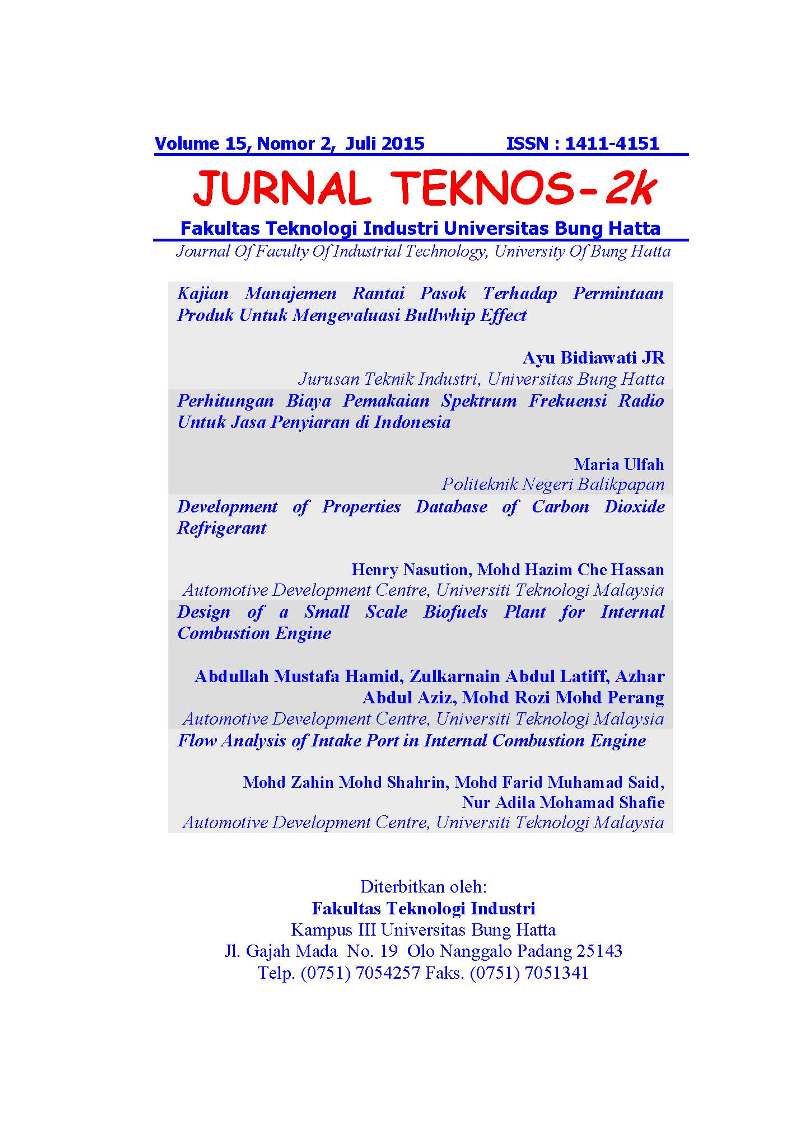Flow Analysis of Intake Port in Internal Combustion Engine
Abstract
The purpose of this study is to analyse the development of swirl and tumble motion inside internal combustion engine by using computational fluid dynamic (CFD) modelling. Computational fluid dynamic software, FLUENT was used to simulate the swirl and tumble motion inside combustion chamber during intake stroke. Three different intake port design geometries were used to investigate the flow inside the engine cylinders. The original combustion chamber of 1.6L SI engine was used as benchmark and compared with the calculated swirl and tumble ratio in the other two modified intake port design. Analysis works of the intake stroke were performed. Here, the flow analysis using static model illustrates similarity compared to dynamic model. The effect of intake port geometries and intake valve position was analysed. Results were compared between different intake port geometries and intake valve position in term of swirl and tumble ratio. It is discovered that with similar parameters of the engines, intake port geometries with the biggest diameter give the lowest value of swirl and tumble ratio, while by increasing the position of intake valve, value of swirl and tumble ratio increases. The simulation results confirmed that different intake port designs affect the development of swirl and tumble inside internal combustion engine based on calculated swirl and tumble ratio.

